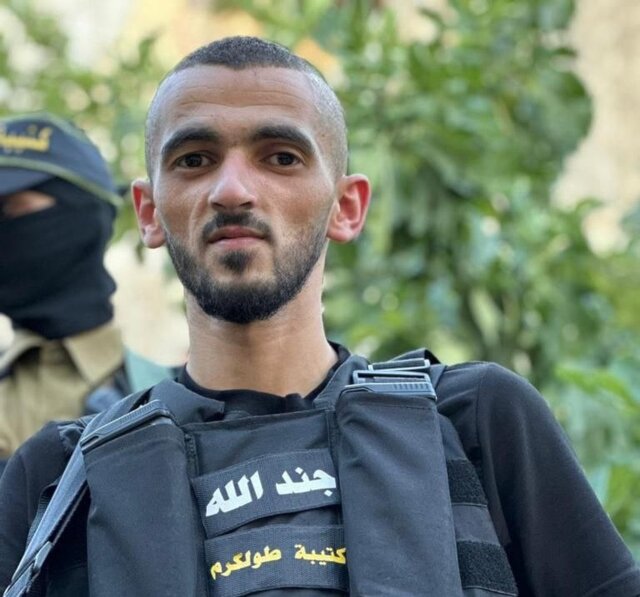The Warlords Return to Afghanistan: Atta Mohammad Noor
The Warlords Return to Afghanistan: Atta Mohammad Noor
On June 21, the Afghan warlord Atta Mohammad Noor pledged to mobilize the public of his native Balkh province to fight the Taliban (TOLO News, June 22; Twitter.com/Atamohammadnoor, June 21). The announcement came as the Taliban has made dramatic territorial gains in the country, having seized more than 50 Afghan districts since May, and U.S. and coalition forces rapidly withdraw from the country (TOLO News, June 22). Noor, in his June 21 remarks, called for a “national mobilization” to turn the tide against the Taliban advance, potentially signaling a new phase of the conflict, as local and ethnically-based militias organize and veteran warlords call upon long existing networks of potential fighters. But who is Atta Mohammad Noor, and how will his return to the battlefield affect the security situation in Afghanistan?
Noor is an ethnic Tajik born in 1965 and raised in Mazar-i-Sharif, Balkh province (Afghan Bios, March 19). He became affiliated with the Tajik-dominated Jamiat-e Islami party in the early 1980s and rose to prominence as a mujahideen commander during the Soviet-Afghan War. By the time of the Afghan communist party’s collapse in 1992, Noor had become one of the most influential commanders in northern Afghanistan. During the Soviet war, Noor fought against troops commanded by Abdul Rashid Dostum, who was then a regional commander under the communist government, overseeing mostly ethnic Uzbek soldiers. Dostum defected from the government in 1992, and formed the Junbish-e-Milli party, of which Noor was temporarily a member. However, Noor split from Dostum in 1993 due to ideological differences, and the two continue to be rivals to this day. After the fall of the Taliban, Noor was able to beat Dostum to Mazar-i-Sharif, seizing control of the city and the entirety of Balkh province following a series of battles with the Uzbek warlord. He eventually became governor of Balkh province, a role he held from 2004 to 2018 (Afghan Bios, March 19).
As governor, Noor seized complete control of Balkh province by placing family members and close lieutenants from Jamiat-e Islami, who had fought with him over the past decades, to subordinate positions (Gandhara, March 21, 2018). Noor also placed his militia fighters and other loyalists into the Afghan Local Police (ALP), quickly forming the bulk of those law enforcement units. Reportedly, by 2013, 80 percent of the ALP in Balkh province had some ties to Noor, in effect giving him control over the governing and law enforcement of the province. From his perch as the “king” of Balkh province he reportedly made a substantial fortune through control of local businesses, real estate, and criminal drug trafficking networks. [1] The province also became one of the most stable and prosperous in Afghanistan.
Noor’s time as governor came to an end amid a controversial confrontation with the administration of President Ashraf Ghani in 2017. The longstanding policy of the Hamid Karzai administration, in office from 2004 to 2014, was to place local warlords in power in their respective territories, and therefore absorb their militias into the government’s battles with the Taliban. President Ghani, however, sought to rein in the local powerbrokers in a bid to exert his own authority and rule of law in the country (Commentaries, October 2, 2018). Noor initially refused to step down from his governorship, but did so only after the Ghani government offered significant concessions, including giving him the ability to choose his own successor. This successor would be Muhammad Ishaq Rahgozar, who entered office in March 2018. He was replaced by Mohammad Farhad Azimi, also considered close to Noor, in October 2020 (Khamaa, October 6, 2020). It was widely understood then and remains known today that Noor is the real power in Balkh province.
Noor’s most recent pledge to mobilize Balkh province to fight the Taliban is not a unique development. He personally led his forces against the Taliban in the province in April 2018 (Twitter.com/BalkhTariq, April 29, 2018). After his most recent public pledge, he again went to his home province to lead operations against the Taliban (Twitter.com/Atamohammadnoor, June 29). What is new, however, is the call for a wider national mobilization, wherein Noor appealed, “to the various political factions to ask their forces to join the National Mobilization so that we can unitedly and strongly stand against our country’s enemies” (Twitter.com/Atamohammadnoor, June 29). Though local militias have been a mainstay in the fight against the Taliban for the entirety of the war, Noor now appears to be calling for a wider mobilization, and for these militias to be integrated with the Afghan National Defense and Security Forces (ANDSF).
This integration appears to have been given approval by the Ghani administration. President Ghani called on the militias to form a “united front” to support the security forces. The Afghan Defense Minister stated that “patriots and people everywhere [should] stand alongside their security and defense forces” (al-Jazeera, June 25). On June 29, an ANDSF spokesperson announced that national mobilization forces would be integrated with small local army units and operate alongside the ANDSF. Reports also indicate that the Afghan military will arm and pay the militia members associated with the national mobilization (Reporterly, June 29).
Though the move to integrate the militias is likely to meet the approval of Noor and other warlords, the policy decisions could have unintended consequences. Namely, the desperate move will grant greater influence to the leaders of the local militias, reversing the Ghani administration’s long-term efforts to roll back their power. Should the security situation continue to deteriorate in Afghanistan—and all indications point that way, as a recent U.S. intelligence assessment estimates that the government in Kabul could collapse six months after the American withdrawal—Noor and other warlords will likely seize greater control of their local areas, create security forces loyal exclusively to themselves, and potentially form conditions for even greater levels of violence in the future (al-Jazeera, June 24).
Not currently clear is whether the activation of local militias will be able to turn the tide against the Taliban’s advance, as the various armed groups led by the warlords have not yet made any substantial territorial gains in the country. As Afghanistan enters a new, chaotic phase in its long-running conflict, Atta Muhammad Noor is a figure to watch, as he continues to battle the Taliban and secures his influence in the north to the detriment of Kabul.
Notes
[1] See HRW report, March 3, 2015: https://www.hrw.org/report/2015/03/03/today-we-shall-all-die/afghanistans-strongmen-and-legacy-impunity#_ftn152

